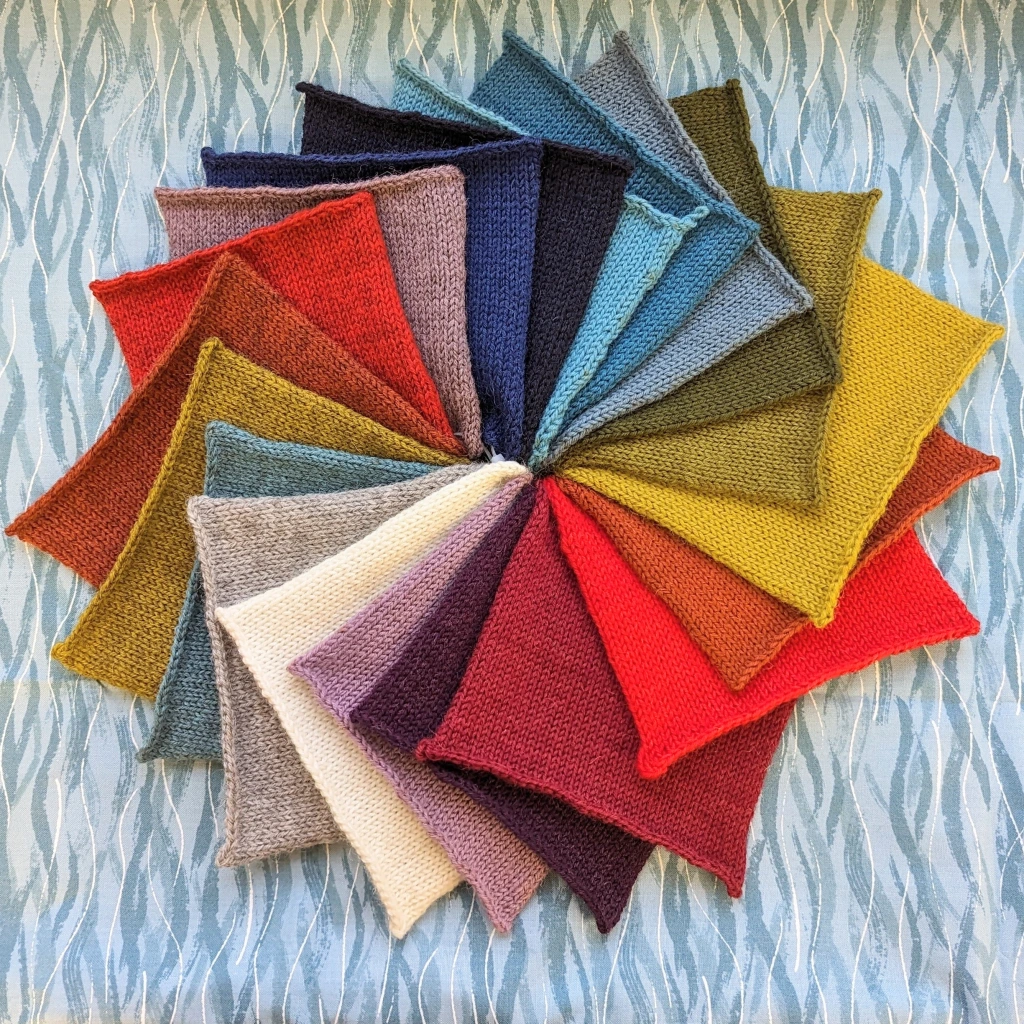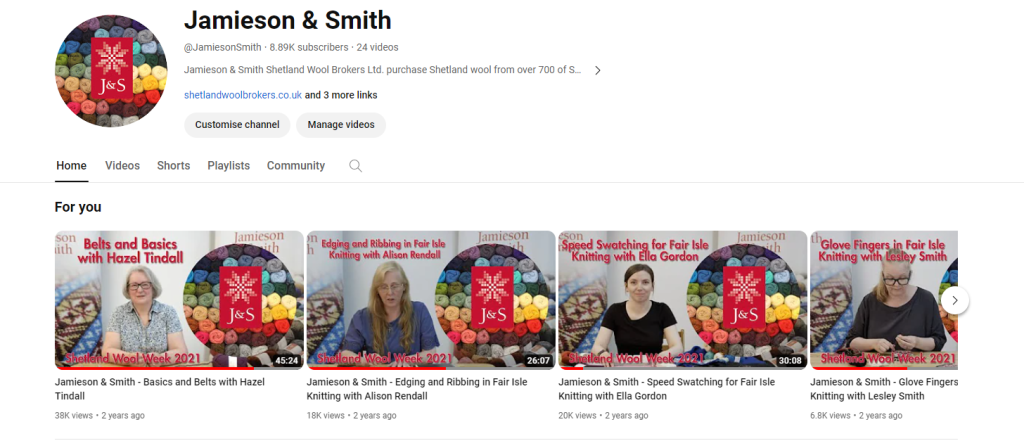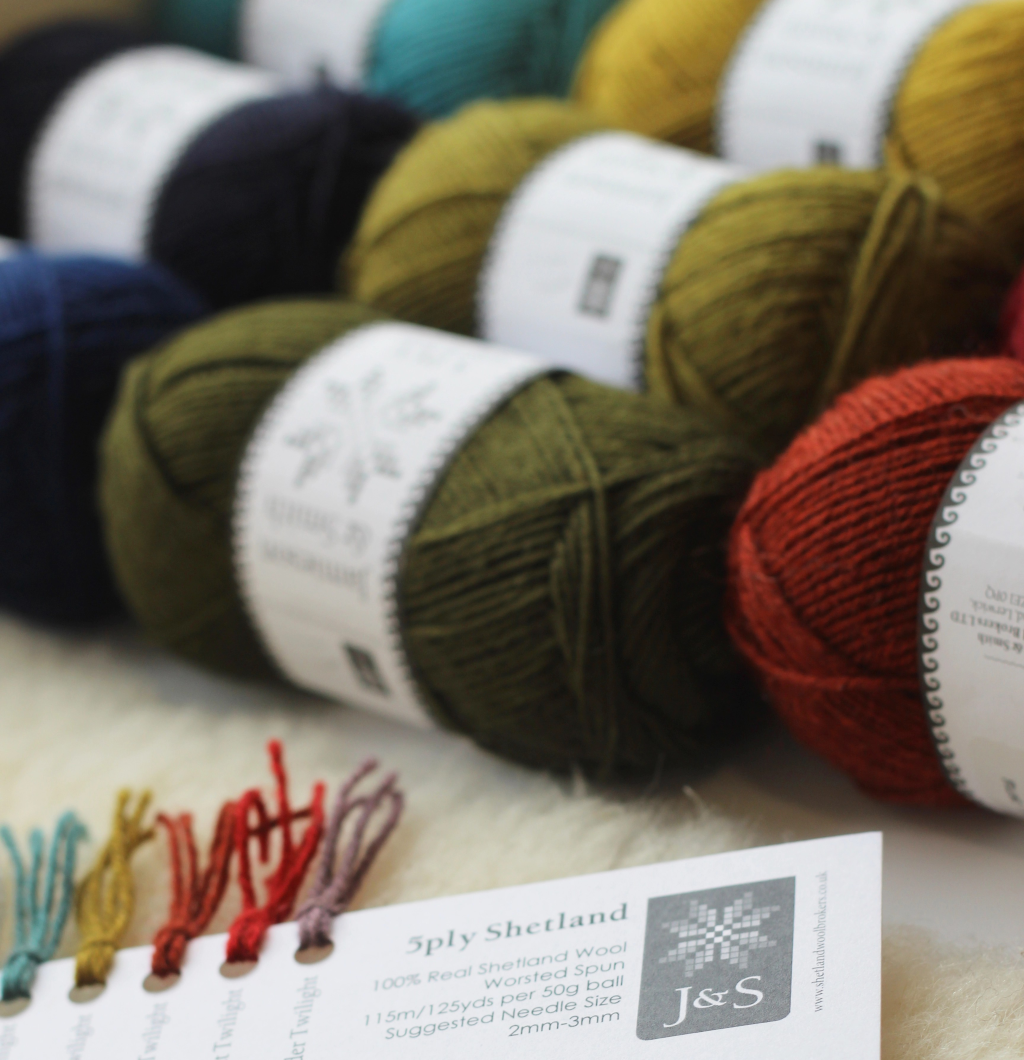
You don’t have to look hard in my studio to find wool. There are balls of J&S yarn scattered everywhere and crimps of raw fleece dotted around my work benches. There’s a grip and bite to Shetland wool that is unlike any other wool I have used in my work; the texture is beautiful to hold and excellent to work with. J&S have an enticing range of colours waiting to grab your attention but it’s the natural shades that always sit best with my work. Reminding me of shearing sheep on my home island of Fair Isle.


Some of my fondest childhood memories are gathering as a community to ‘caa’ sheep. This process involves walking through the rugged, heather-covered hills as one to manoeuvre the flock toward the ‘crü’, a large enclosed pen from which sheep can be sheared and dosed. Feeling the rich, almost sticky lanolin coat my hands as I prize fleece away from skin to find the growth line I will clip along. Not only have these textures, colours and smells stuck with me, the coming together of community to work collectively had a huge impact on me too. As with many artists, my personal history is an integral framework for my practice. The mentality and dynamic of island communities’ shapes my work, I approach my art as an islander.


Materiality forms the backbone of my practice from which I explore the aesthetic qualities, as well as the cultural value of material. Fish skins, salt, wood, and hessian are paired with traditional island skill sets such as knitting, knotting, weaving and stitching to communicate craft, skill, isolation, and commitment to place. It is wool, however, that features in my work time and time again – a material completely intertwined with Shetland culture. When I use wool, I play a small part in feeding into the long and rich history of crofting, knitting and textiles in Shetland.



Living on a small island like Fair Isle simultaneously requires self-sufficiency and a willingness to rely on neighbours. Although not the only industries, the laborious working of land and sea through crofting and fishing, is still a common practice on Shetlands islands. I use my practice as a method of echoing the types of work that take place on islands, commitment to working in a repetitive and laborious way is mirrored through the rhythms and durational nature of my work, reminiscent of the ebb and flow of the sea, or the back and forth of a knitting machine. Alongside the workload of an islander comes a collective commitment to place and way of life, which highlights the need for a strong community, allowing a sharing of workload and the building of support structures. It is this joined-up thinking I am interested in. To me, islands are places of coming together.


This shared working is very apparent in the crafts of the island and particularly in the knitting, where its commonplace to share patterns and knitting knowledge with neighbours, friends and family. The social aspect is what draws me to textiles and from that stance, my appreciation of wool as a material strengthens.

I’ve never been taught how to use stitch properly, instead making it up as I go along with whatever means make sense to the work. The same goes for my knitting, although Fair Isle is my home island and I have been surrounded by exceptionally talented knitters for my whole life, I only taught myself to knit garments properly in 2017. My use of wool in my artwork has always been intuitive and centres around the development of tactile surfaces and trying to gain an understanding of the materials form and function. piece could be as simple as exploring the relationship between raw and spun wool, yet the touch of the fleece, the smell of the lanolin, the individual crimps, keep my mind and hands engaged for hours. Or the conceptual could take forefront, how does craft practice fit into fine art? Is the internet the new craft space rather than gathering and making physically? Regardless of the starting point for a piece of work, it’s the material – and usually the wool – that my mind goes to first.

I ask viewers to look at material from a perspective they’re not used to. I ask them to question its qualities, origins and if our understanding of the material itself can be built on. From this place of constant learning, a deep appreciation can be formed.
————————————
Vivian Ross-Smith is an artist working from the Shetland Islands. She adopts a collaborative and systematic approach to making and sharing through painting, textiles and the digital. Her work creates space to discuss the practices of island life from a contemporary, fine art context and explores the textures, qualities and values of material and space. Ross-Smith’s work builds relationships and conversations between material, place and people and is as much about experiencing as it is about seeing.
https://www.vivianrosssmith.com
@vrosssmith
Thank you Vivian for this guest post – we hope you are enjoying our Wool Week content – make sure to follow our instagram and subscribe to our youtube channel – if you haven’t already! Happy Knitting!





Leave a comment